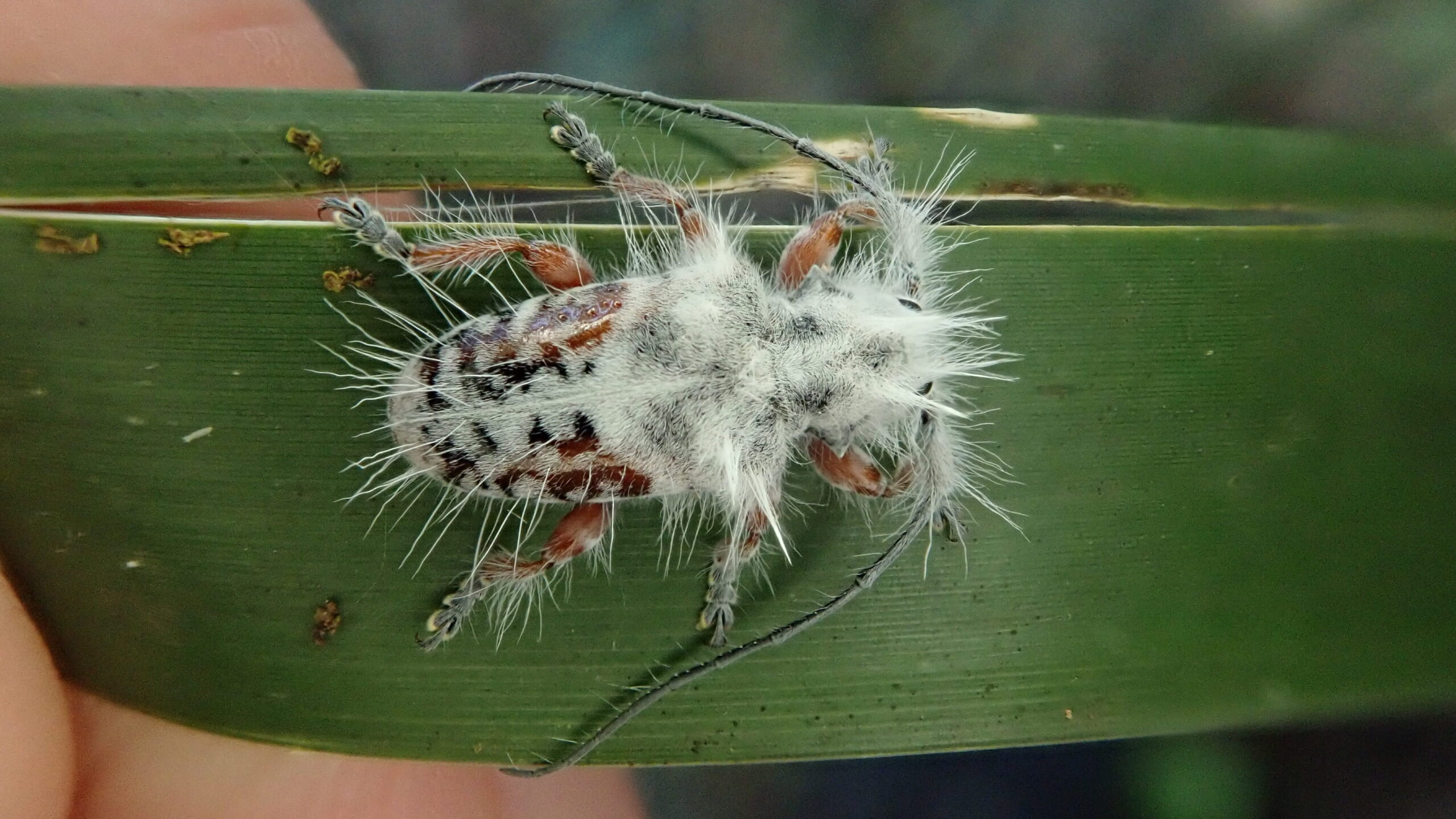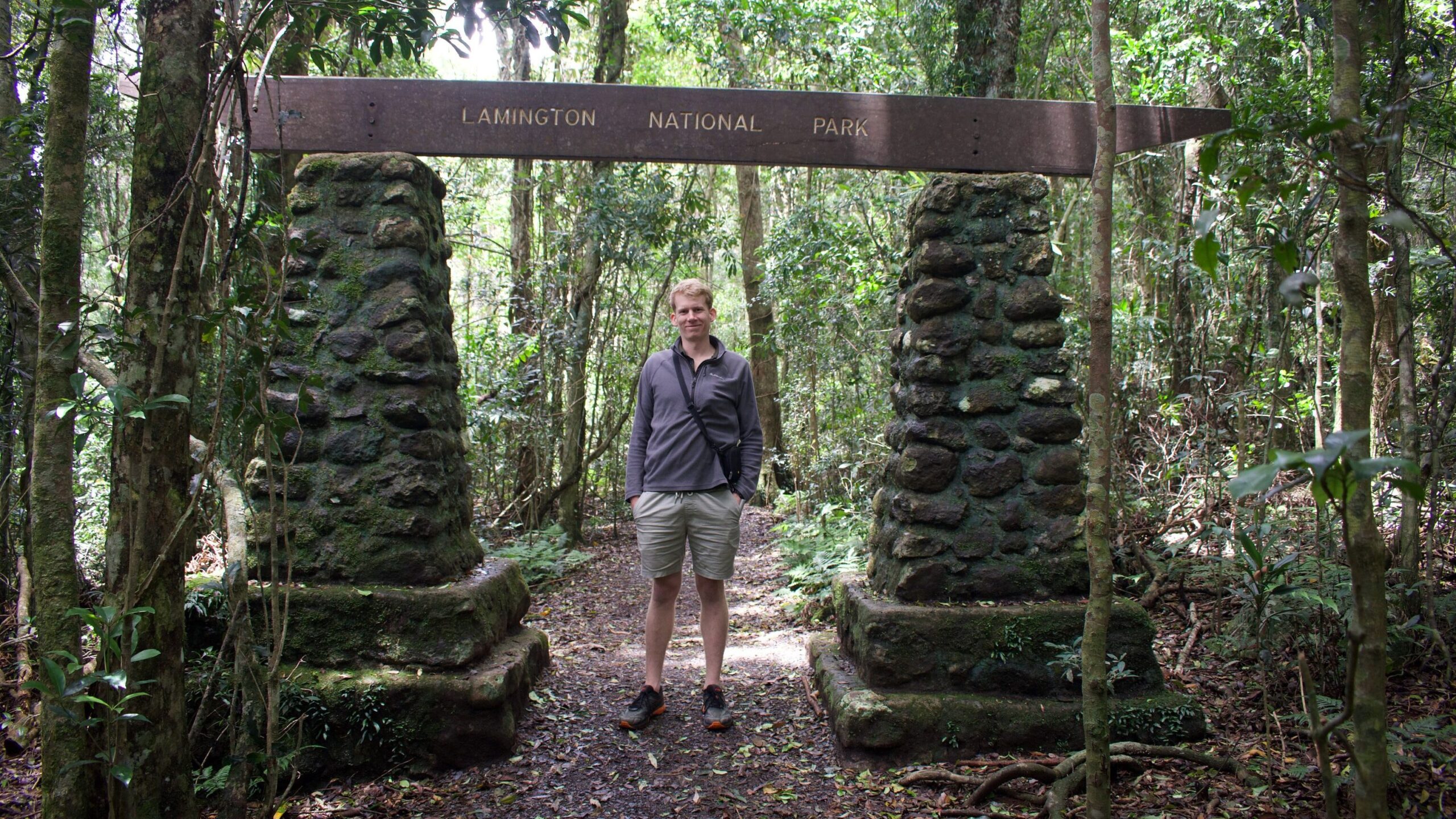‘White and hairy from the camp’: New fluffy longhorn beetle discovered in Gold Coast rainforest

‘White and hairy from the camp’ – that’s the translation of the scientific name given to a new species of longhorn beetle found in the Gold Coast hinterland.
The name makes perfect sense when you know the backstory.
Excastra albopilosa was discovered by James Tweed – a PhD candidate in The University of Queensland’s School of the Environment – while on a camping trip in Lamington National Park.
“I was walking through the campsite at Binna Burra Lodge one morning and something on a lomandra leaf caught my eye,” recalls James, who goes on to explain he initially mistook the beetle for bird droppings!
“To my amazement, I saw the fluffiest, most extraordinary longhorn beetle I had ever seen. Measuring 9.7mm, it was a striking red and black beauty covered in long white hairs.”

When James returned from the trip, he tried to identify the creature, searching through books, scientific papers and online resources and forums, but he could not find a match. In fact, he says, nothing looked even remotely similar.
The next step was an email to the Australian National Insect Collection (ANIC) in Canberra, whose experts confirmed the beetle was a completely new species.
Later, after examining the specimen itself, the ANIC team determined it was not only a new species, but a new genus (family of species) as well.
“So we chose the name Excastra for the genus, which is Latin for ‘from the camp’,” explains James, “and for the species name, we decided on albopilosa which translates to ‘white and hairy’.”

Why so hairy?
“We don’t yet know what these hairs are for, but our primary theory is that they make the insect look like it’s been killed by an insect-killing fungus,” James says. The purpose of this would be to deter birds and other predators from eating it.
“But until someone can find more specimens and study this species further, we won’t be able to say for sure why this beetle is so hairy,” he says.
However, this may not happen anytime soon, because Excastra albopilosa continues to remain very elusive.
“The area has been popular with entomologists for more than 100 years so it’s puzzling that it hasn’t been found until now,” says James. “I’ve been back several times to look for more of them, but haven’t had any luck.”

‘Underappreciated and understudied’
“Best estimates suggest there may be 5.5 million insect species worldwide and only one-fifth of these have been named and described,” James says. “Insects are the most diverse group of animals on the planet, but they are also the most underappreciated and understudied.”
Chance finds like James’s highlight how many unknown species of insects could be out there. And many of these could be under threat from extinction before even being discovered.
“We’re experiencing rapid declines in biodiversity globally, and it’s difficult to conserve species if we don’t even know they exist,” James says.





